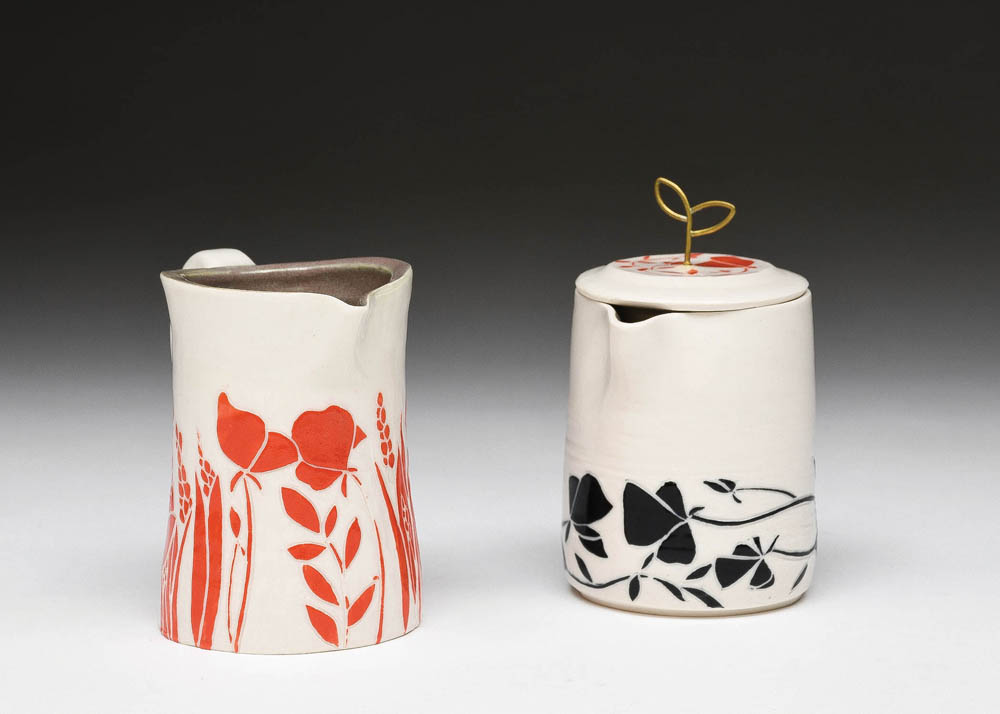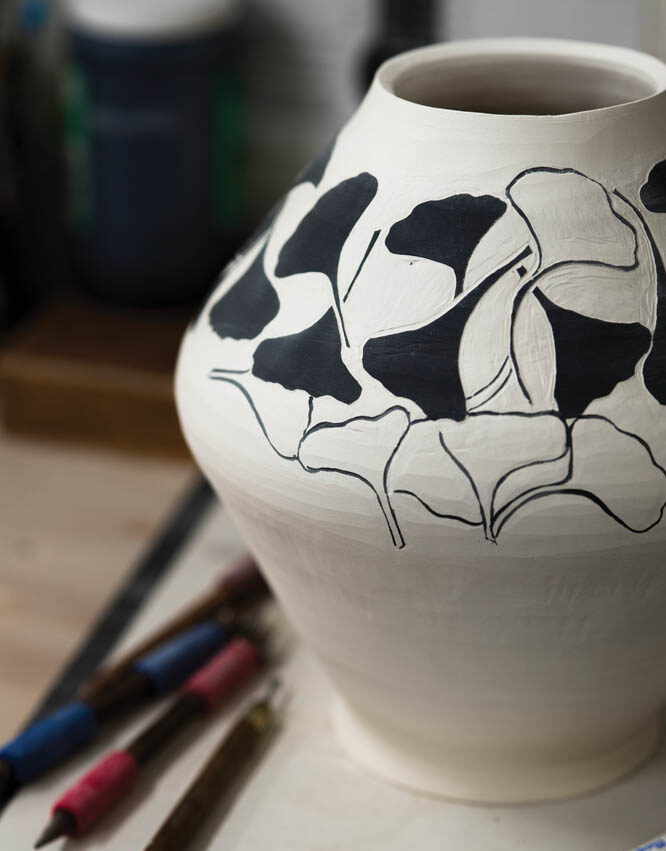
Asheville ceramics artist Mary LaBianca, proprietor of Tiny Mountain Clay, holds an MFA from Mills College and worked as a choreographer and dance teacher for many years before “becoming more curious about clay” in 2020. Since then she has transitioned into ceramics as a full-time pursuit and earned a diploma in Clay from the Professional Crafts Program at Haywood Community College. But as she acknowledges, “All of that work in dance and choreography is informing how I’m finding my way in clay.”

LaBianca explains that in both ceramics and choreography, “You have an idea and play with that idea in different ways to find out which way catches your eye. I trained my eye as a dance maker to notice gestures and moments that interest me, and I use that same intuitive lens for looking at pots.” She also practices habits she found helpful in dance to prepare for creating with clay — such as doing extensive research, jotting down notes, and even performing ceramicist warm-ups, sans the leotard and dance barre. “When I enter my studio, I transition to the work of making. I make a list, do some reading or drawing in my sketchbook, and take time to warm up with the clay material, usually by throwing cylinders and experimenting with cup forms.”
LaBianca produces an array of exquisitely beautiful and functional pieces: cups and mugs, vases and pitchers, bowls and jars, table settings and kitchenware, whimsical reliquaries for containing garden seeds. She constantly experiments with various types of kiln firings, clay mixes, glazes, textures, and approaches to her unique designs. But she works primarily in porcelain — highly prized for centuries for its elegance, vibrant colors when glazed, and exceptional resistance to scratching, chipping, and cracking. Porcelain’s characteristic tensile strength gives LaBianca’s pieces durability for daily use — coupled with the potential to live on for generations as cherished heirlooms.

That strength is literally baked in, because tight molecular bonds are formed as porcelain is fired at temperatures that climb above 2,300 degrees Fahrenheit. Based on data from the U.S. Geological Survey, that’s about 200 degrees hotter than the lava that spews from Hawaii’s Kilauea volcano — and scientists rank it as the hottest volcano on Earth.
“The science of clay and glaze is so fascinating,” says LaBianca, “and I’ve fallen in love with wood firing. I think it’s because you put your work into the kiln and then have to give it the special attention that it needs. The fire has to be listened to, you have to feed it, and it’s a longer process that you have to do with others because you can’t do it all yourself. So you’re making something with a group of people. To me it feels a lot like dancing. I just feel fortunate to be able to do something I love, and to share that with others.”
Mary LaBianca, Tiny Mountain Clay, Asheville, tinymountainclay.com and on IG @tinymountain.clay. LaBianca is an exhibiting studio artist at the Odyssey Gallery of Ceramic Arts (238 Clingman Ave. Ext. in the River Arts District, odysseygalleryofceramicarts.com). Her upcoming shows include The Big Crafty (Saturday, Dec. 2 and Sunday, Dec. 3, at Harrah’s Cherokee Center Asheville, 87 Haywood St., see thebigcrafty.com) and at the River Arts District’s Second Saturdays (including December 9, January 13, February 10, March 9, at Odyssey Gallery, with trolley access). LaBianca will also exhibit at the Folk Art Center (Milepost 382 on the Blue Ridge Parkway) from May through September, 2024; see southernhighlandguild.org.
